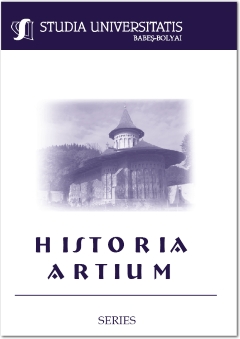AVATAR. SEMINARUL ŞI CATEDRA DE ISTORIA ARTEI A UNIVERSITĂŢII DIN CLUJ ÎN ANII DE REFUGIU SIBIAN (1940-1945)
AVATAR. THE ART HISTORY SEMINARY AND DEPARTMENT OF THE UNIVERSITY OF CLUJ DURING THE YEARS OF REFUGE IN SIBIU (1940-1945)
Author(s): Nicolae SabăuSubject(s): Fine Arts / Performing Arts
Published by: Studia Universitatis Babes-Bolyai
Keywords: 1940-1945 Refuge; the University of Cluj in Sibiu; the Art History Seminary; course curriculum; scientific creativity; university life; conferences.
Summary/Abstract: Avatar. The Art History Seminary and Department of the University of Cluj during the Years of Refuge in Sibiu (1940-1945). The author of the present study returns to the history and activity of some of the faculties of the University of Cluj that were forced into exile after the Vienna Dictate (30.08.1940). Since the first year of its refuge, this higher education institution proved to be a solid and indubitable example of organization and scientific creativity. The five vital functions of the university, scientific creativity, instruction, education, university life, and university extension, components of a living and “life-giving” organism, have reached fulfillment despite the harsh conditions of the interim government during the war. The faculties, the university library, the personnel of the university institution, of all categories, and the museums, except for the Faculty of Science that was moved to Timișoara, were all relocated into adequate buildings in a very short period; all specialties were provided with suitable locations, so that a “wondering university”, a peregrine school became, with the support of the Romanian State, a self-standing university that was to initiate in Sibiu a new tradition of Romanian higher education. The documents preserved in the archive of the Art History Seminary and Department of the Faculty of Philosophy and Letters have eased the close reconstruction of the university course curriculum, for each semester, during the entire length of the refuge period, taught by Professor Coriolan Petranu (1893-1945). There was also the series entitled Lectures of Introduction to University Life and Synthesis Lectures on the Realities of Romanian Cultural Life, organized at the initiative of the rector of that period, Prof. Iuliu Hațieganu, held by invited professors specialists in a wide array of disciplines among which art history was especially consistently present. One can also add the cultural propositions and activity of the ASTRA and of the “Gh. Şincai” History Studies Group and the significant popularity of such activities organized by new research centers such as the Center for Transylvanian Studies founded in the summer of 1942. The present paper recalls the lectures held by reputed scholars, Romanian and foreign (Italian and German) professors, the collaboration with ecclesiastic institutions from Romania (deaneries, bishoprics), with some international forums such as the International Bureau of Education in Geneva, the specialized expertise reports in the field of religious painting, and the collaboration with the Royal Foundations Review [Revista Fundațiilor Regale], but also the publication of the volume entitled “Siebenbürgen”, written by a group of Romanian historians and launched in Sibiu on 20.02.1943. A significant part of the present paper focuses on the correspondence collection of Prof. Petranu with Romanian and European art historians involved in the research of visual arts from Romania between...
Journal: Studia Universitatis Babes Bolyai - Historia Artium
- Issue Year: LIX/2014
- Issue No: 1
- Page Range: 5-66
- Page Count: 62
- Language: Romanian

